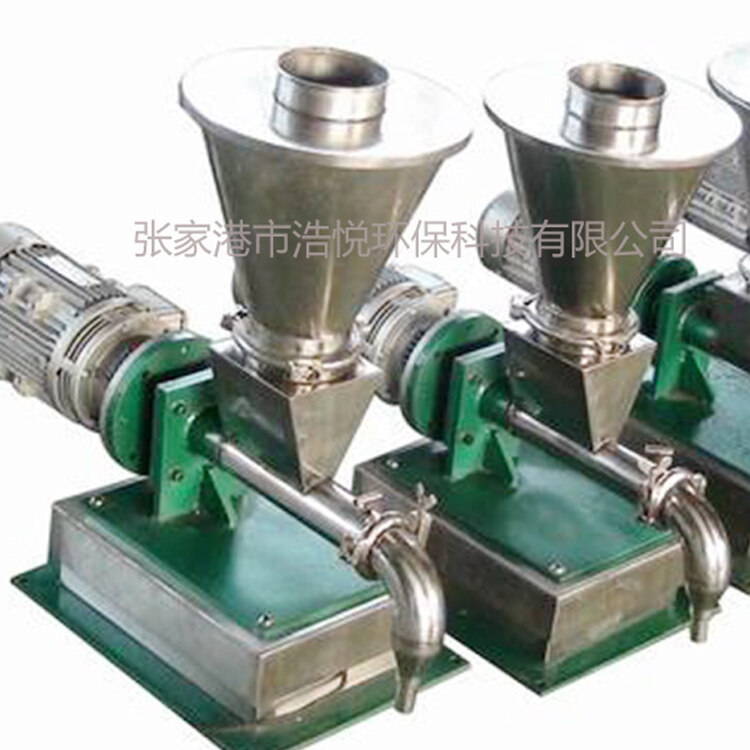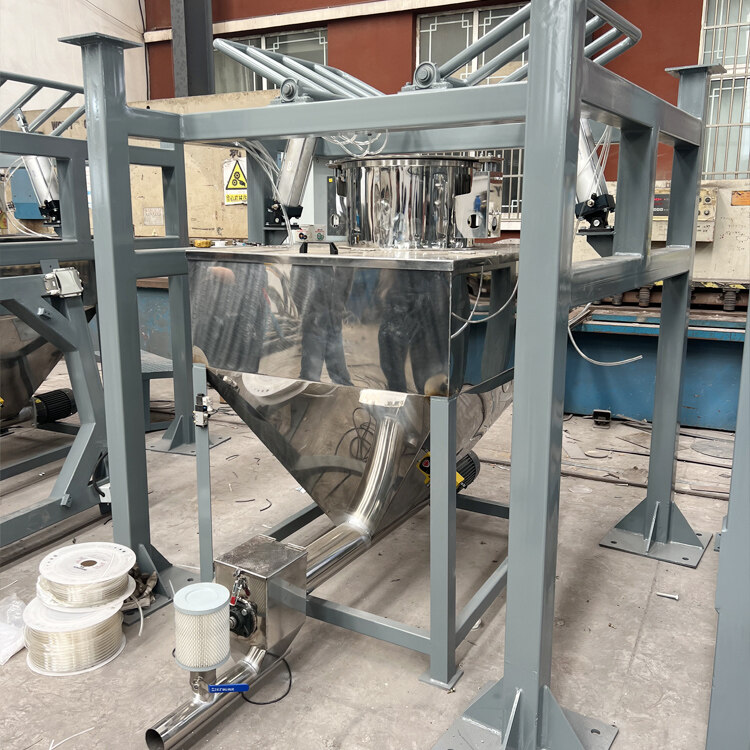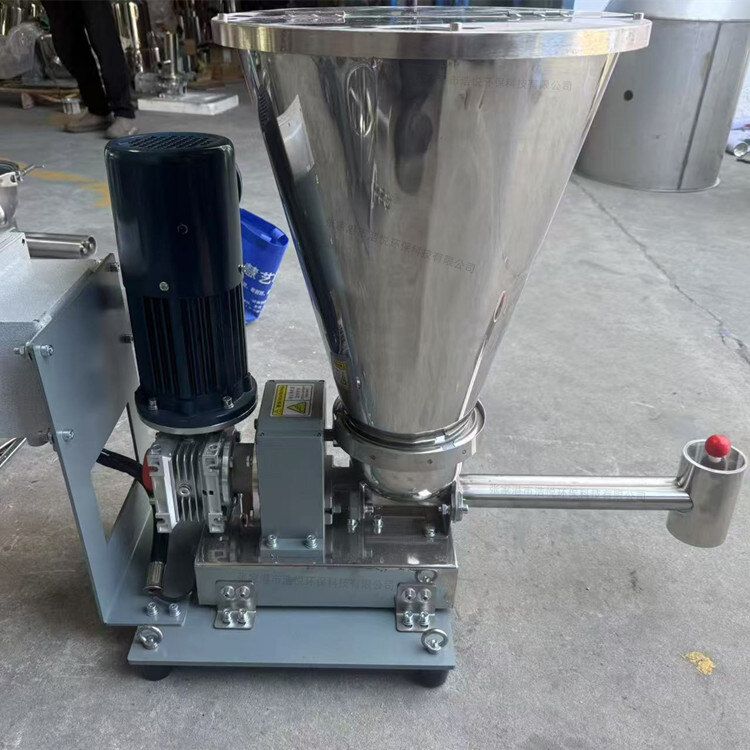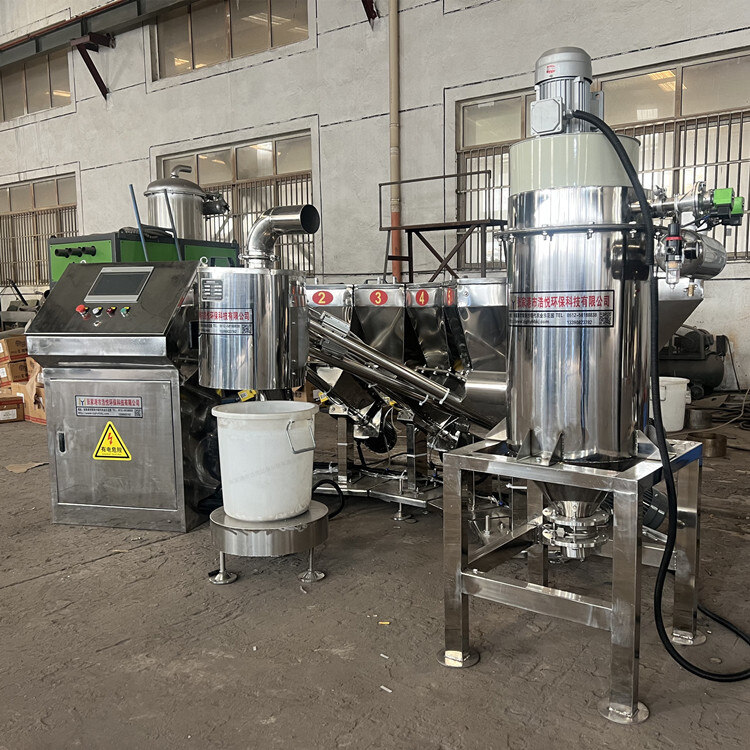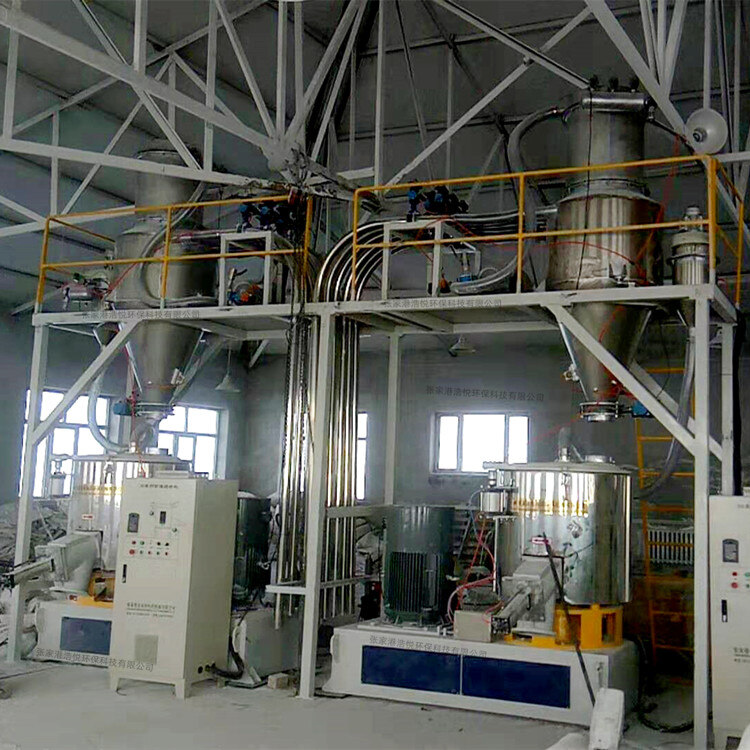- Introduction to automatic batching machine and fully automatic batching machine equipment
- The powder metering system tells you about the introduction of the mixing and drying machine
- 1000kg vacuum feeding machine
- Fully automatic small material batching system
- Research on Innovation of Automatic Weighing Machine Technology
- Design and operation of automatic batching system using PLC, industrial computer and frequency converter
Weightlessness scale
- Category:Weightlessness scale
- Hits:136次
- Release Date:2025-06-30
- Share:
- Inquiry
- Details
Accurate measurement and stable transportation of materials are key links in ensuring product quality and production efficiency in industrial production fields such as chemical, food, and building materials. The weightlessness scale, also known as the weightlessness measuring scale, has become the preferred equipment for many enterprises to achieve precise batching and continuous feeding due to its high precision and dynamic measurement characteristics. It controls the feeding speed by real-time monitoring of changes in material weight, which can more accurately meet the strict requirements of production processes for material ratios compared to traditional measurement methods. The following will provide a comprehensive and in-depth introduction to weightlessness scales from the aspects of working principles, system composition, core advantages, application scenarios, and development trends.
1、 The working principle of weightlessness scale
The weightlessness scale is based on the principle of "weightlessness measurement", and its core is to accurately control the conveying flow of materials by monitoring the rate of change of material weight over time in real time. When the equipment is running, the silo containing materials is installed on a high-precision weighing sensor, which collects real-time data on the total weight of the silo and materials and transmits it to the control system. When the feeding mechanism starts working and transports the material to downstream equipment, the weight of the material in the silo gradually decreases, and the weighing sensor continues to capture this weight change.
The control system analyzes and calculates weight change data based on the preset material flow target value. If the actual weight change rate does not match the target flow rate, the control system will automatically adjust the operating parameters of the feeding mechanism (such as the speed of the screw feeder, the speed of the belt feeder, etc.) to keep the output flow rate of the material consistent with the set value. For example, when the material output speed is detected to be too fast, causing the weight reduction rate to exceed the target value, the control system will reduce the operating speed of the feeding mechanism; On the contrary, the speed is accelerated to achieve precise measurement and stable transportation of materials. This dynamic measurement method based on real-time weight changes can effectively eliminate errors caused by material characteristic fluctuations, equipment wear, and other factors in traditional measurement methods, ensuring high accuracy and reliability of measurement.
2、 System core composition architecture
The weightlessness scale is mainly composed of five core modules: weighing system, silo, feeding mechanism, control system, and frame. Each part is closely coordinated to form a complete measuring and conveying system.
(1) Weighing system
The weighing system is the key to achieving accurate measurement of weightlessness, consisting of high-precision weighing sensors, signal processing modules, and weighing platforms. Weighing sensors often use strain gauges or electromagnetic force balance sensors, with an accuracy of ± 0.1% - ± 0.5%. They can sensitively sense small changes in the weight of materials in the silo and convert the weight signal into an electrical signal output. The signal processing module amplifies, filters, and performs analog-to-digital conversion on the weak electrical signal output by the weight sensor to improve the stability and accuracy of the signal, and then transmits the processed data to the control system. The weighing platform is used to carry silos and materials, and its structural design needs to have good rigidity and stability to ensure that the weighing process is not affected by external vibrations, impacts, and other factors.
(2) Storage bin
The silo is used to store materials to be measured and transported, and its capacity is designed according to production needs, usually ranging from a few hundred kilograms to several tons. The shape and structure of the silo will be optimized based on the characteristics of the material, such as fluidity, particle size, humidity, etc. Common types include conical, square, etc. To ensure smooth material discharge, the inner wall of the silo is generally polished to reduce the friction between the material and the silo wall; For materials with poor fluidity, stirrers, arch breaking devices or vibrators will be installed inside the silo to prevent material clumping and bridging, ensuring that the material enters the feeding mechanism uniformly and stably.
(3) Feeding mechanism
The feeding mechanism is responsible for conveying the materials in the silo to downstream equipment according to the set flow rate. Based on the characteristics of the materials and production process requirements, there are mainly the following types:
Spiral feeder: suitable for powdered and small granular materials such as cement, flour, additives, etc. By rotating the spiral blades, the material is pushed out of the silo and transported to the designated position, and the material flow rate can be accurately controlled by adjusting the speed of the spiral shaft.
Belt feeder: commonly used for conveying materials with larger particles and better flowability, such as ores, grains, etc. The belt runs at a constant speed under the drive of the driving roller, and the material is conveyed on the belt. The feeding amount can be controlled by changing the belt speed or adjusting the thickness of the material layer.
Vibration feeder: Utilizing the vibration generated by the vibration motor, the material undergoes a jumping motion on the hopper to achieve uniform feeding. Suitable for materials that are sensitive to damage, such as nuts, candies, etc., the material flow rate can be controlled by adjusting the vibration frequency and amplitude.
(4) Control system
The control system is based on PLC (Programmable Logic Controller) or industrial computer, equipped with dedicated control software and human-machine interface (HMI). The operator inputs information such as the target flow rate of the material, initial weight of the silo, and operating parameters of the feeding mechanism through the HMI. During the operation of the system, real-time weight data feedback from the weighing system is received and compared with the preset flow target. Based on the deviation, the operating status of the feeding mechanism is automatically adjusted to achieve closed-loop control. In addition, the control system also has functions such as fault diagnosis, alarm prompts, data recording, and storage. When the equipment malfunctions (such as abnormal weighing sensors, blocked feeding mechanisms, material interruption, etc.), the system will immediately sound and light an alarm and record the fault information, making it convenient for maintenance personnel to quickly locate and solve the problem. At the same time, historical data reports can be generated to record information such as material usage, feeding speed, equipment operating time, etc., providing a basis for production management and cost accounting.
(5) Rack
The rack is a frame structure that supports the entire weightless scale, generally made of high-strength steel welded or bolted together, with sufficient strength and rigidity to withstand the weight of the silo and materials, as well as the vibration generated during equipment operation. The design of the rack needs to consider equipment installation space, maintenance convenience, and integration with upstream and downstream equipment to ensure stable operation of the weightless scale and ease of operation and maintenance.
3、 Core technological advantages
(1) High precision dynamic measurement
By monitoring the weight changes of materials in real time and dynamically adjusting them, the weightlessness scale can effectively overcome the influence of material characteristic fluctuations, equipment wear and other factors on measurement accuracy, and achieve high-precision material measurement. In scenarios where high precision is required, such as catalyst addition in the chemical industry and raw material proportioning in the food industry, measurement errors can be controlled within ± 0.5%, and even up to ± 0.1% in some high-end applications, providing strong guarantees for the stability of product quality.
(2) Stable and reliable continuous feeding
Capable of automatically adjusting the feeding speed according to production needs, ensuring continuous and stable delivery of materials to downstream equipment, and avoiding situations of material interruption or uneven feeding. Even when there are certain changes in material characteristics (such as humidity and particle size fluctuations), stable flow output can be maintained through adaptive adjustment to ensure the continuity and stability of the production process.
(3) Wide material adaptability
It can be applied to various forms of materials such as powder, particle, and block, and can flexibly adjust the silo structure and feeding method according to the characteristics of different materials. Whether it is granular materials with good fluidity or powdery materials with high viscosity and easy agglomeration, weight loss scales can achieve good measurement and transportation effects, and have strong universality and adaptability.
(4) Intelligent and Automated Operations
Equipped with highly automated operation capabilities, operators only need to set relevant parameters on the human-machine interface, and the equipment can automatically complete material measurement and conveying tasks, reducing manual intervention, labor intensity, and human errors. At the same time, the intelligent control system supports remote monitoring and data transmission. Management personnel can view the real-time operation status of equipment and adjust parameters through the network, achieving intelligent management of the production process.
4、 Application scenarios
(1) Chemical industry
In the production of chemical products such as coatings, inks, plastics, rubber, etc., it is used for precise measurement and continuous feeding of raw materials such as resins, pigments, additives, catalysts, etc. For example, in the process of plastic granulation, the precise control of the addition amount of color masterbatch, antioxidant and other additives through a weight loss scale ensures uniform color and stable performance of plastic products; In the rubber mixing process, precise measurement of materials such as carbon black and sulfur is carried out to improve the quality and performance of rubber products.
(2) Food industry
In the process of food processing, various raw materials are accurately proportioned and quantitatively transported, such as flour, sugar, salt, milk powder, additives, etc. On food production lines such as biscuits, bread, instant noodles, etc., weight loss scales can accurately control the amount of raw materials input according to the formula, ensuring consistency in food taste and quality while meeting food safety and hygiene requirements.
(3) Building materials industry
Used for measuring and feeding materials such as cement, sand and gravel, fly ash, additives, etc. in the production of building materials such as cement, concrete, dry powder mortar, gypsum board, etc. In the concrete mixing plant, the weight loss scale precisely controls the ratio of various aggregates and cement to ensure that the concrete grade meets the requirements and improves the strength and durability of building materials products.
(4) Pharmaceutical industry
In the process of drug production, precise measurement of active ingredients, excipients and other materials is carried out to ensure the accuracy and stability of drug ingredients and meet the requirements of GMP (Good Manufacturing Practice). For example, in the production of solid preparations such as tablets and capsules, the precise control of the dosage of materials such as powder and adhesives through weight loss scales ensures reliable drug quality.
(5) Other industries
Weight loss scales also play an important role in industries such as metallurgy, feed, and new energy. Used in the metallurgical industry for the proportioning of ores and additives; Used for mixed feeding of various feed materials in the feed industry; Accurate measurement of materials such as positive and negative electrode materials for lithium batteries, electrolyte additives, etc. in the new energy industry, providing precise material control solutions for production processes in various industries.
5、 Development Trends
In the future, weightlessness will develop towards higher precision, intelligence, integration, and greenization. In terms of precision improvement, by developing new high-precision weighing sensors, optimizing control algorithms, and adopting advanced signal processing technology, measurement errors are further reduced to meet the measurement needs of nanoscale and trace materials; In terms of intelligence, the introduction of artificial intelligence and machine learning technology enables devices to have self-learning, self diagnosis, and adaptive capabilities, and can automatically optimize operating parameters based on material characteristics and production data; In terms of integration, it is deeply integrated with management systems such as ERP (Enterprise Resource Planning) and MES (Manufacturing Execution System) to achieve collaborative management of production planning, material inventory, and measurement feeding; Greening is reflected in reducing equipment energy consumption, reducing dust emissions, and adopting environmentally friendly materials. By optimizing equipment structure and operating modes, it promotes sustainable development in the industry. Meanwhile, with the popularization of industrial Internet of Things technology, weightless scales will achieve more remote and real-time monitoring and management, further enhancing the production efficiency and competitiveness of enterprises.


